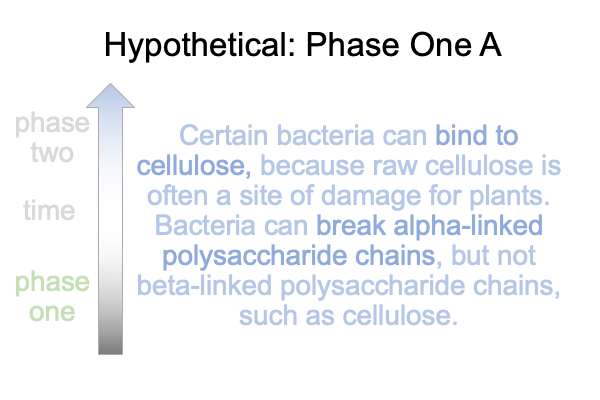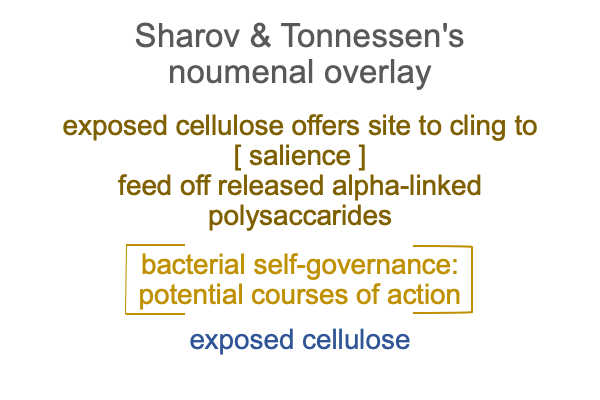0342 How about a hypothetical example?
Cellulose is composed of glucose molecules that are beta-linked to one another. Starch is composed of glucose molecules that are alpha-linked to one another. Beta-linked polysaccharides cannot be digested. Alpha-linked polysaccharides are easy to digest.
0343 Imagine a bacteria that has a receptor capable of clinging to cellulose, but cannot break the beta-linkage. It binds because exposed cellulose associates to plant damage and plant damage releases various nutrients, including alpha-linked polysaccharides. This bacteria is an opportunist.

0344 At this point, I find it hard to predict what happens next. A biosemiotic reality is going to unfold, but I don’t know how.
I do know that phenomena of this biosemiotic constellation objectify the following noumenal overlay. If I want to scientifically study this specific bacteria, then the real elements of the noumenal overlay give rise to phenomena. Phenomena may be observed and measured. The observations and measurements may be modeled. The models account for the contiguities.

0345 Now, this prokaryotic bacteria is not the only living thing that can take advantage of sites of plant damage. Wood-eating insects do the same. They chew into wood, not because they can digest the beta-linked cellulose, but because they get… well… the same nutrients that the cellulose-binding bacteria want to feed on.
